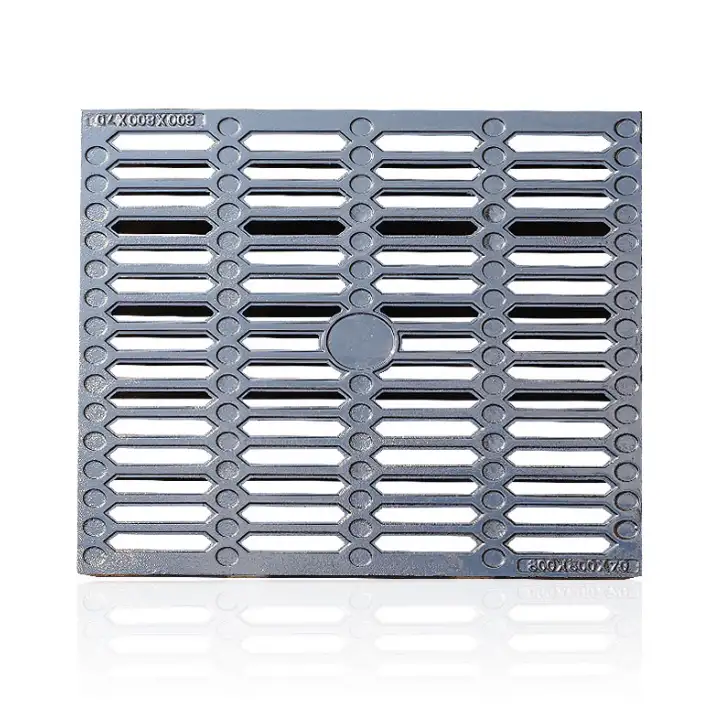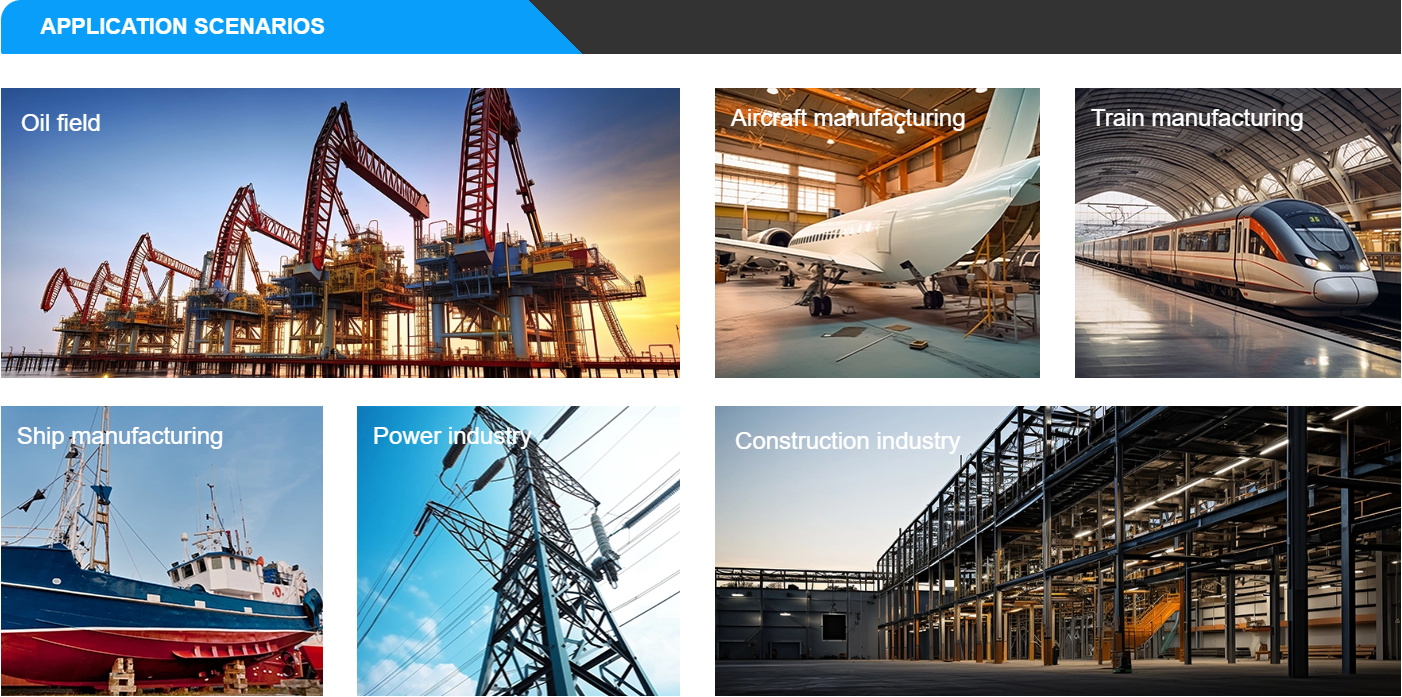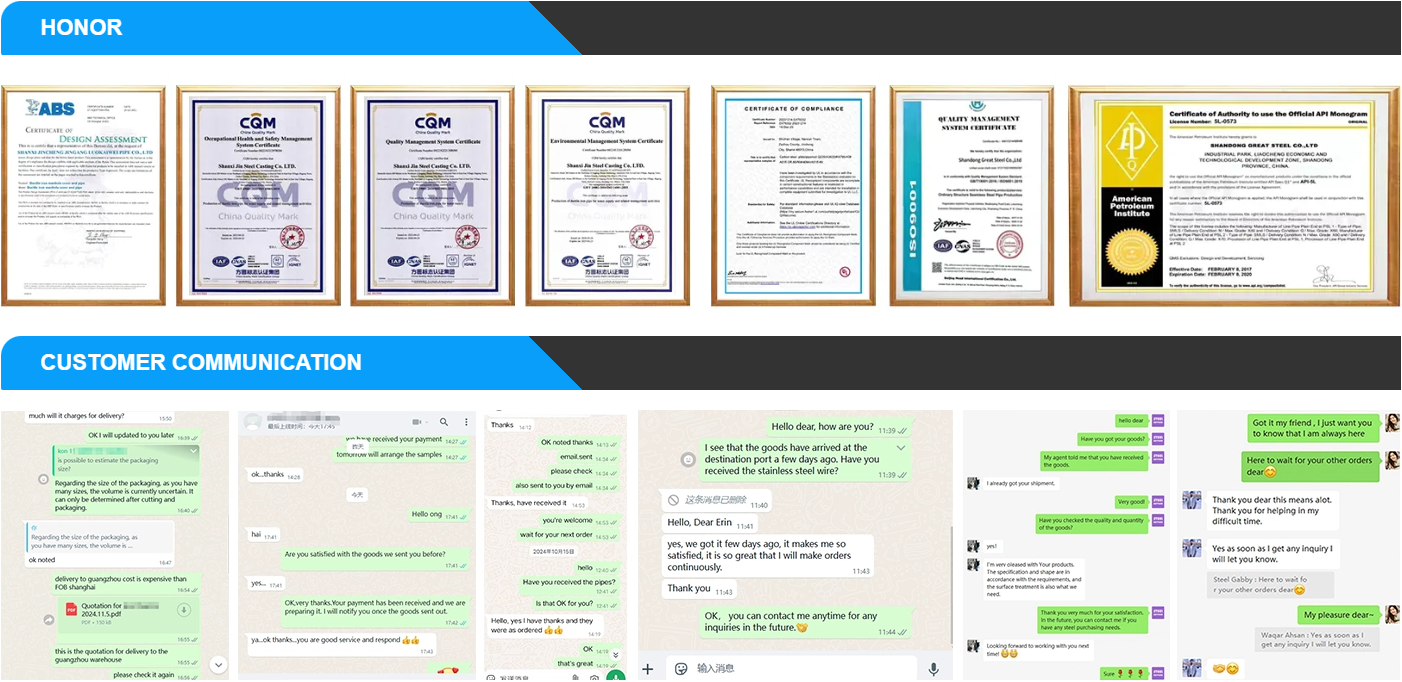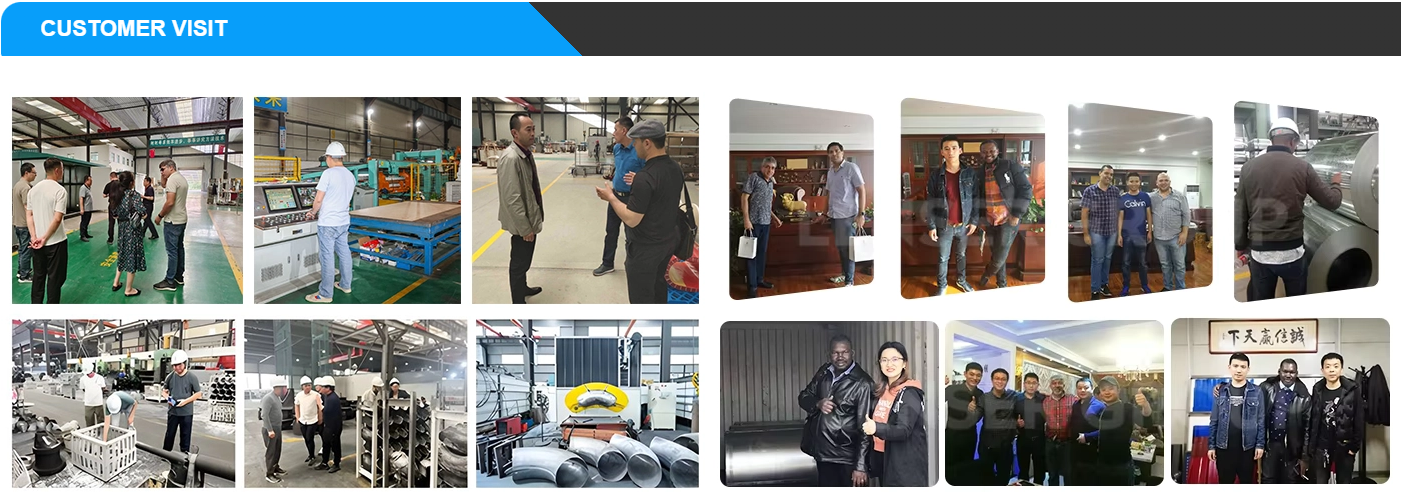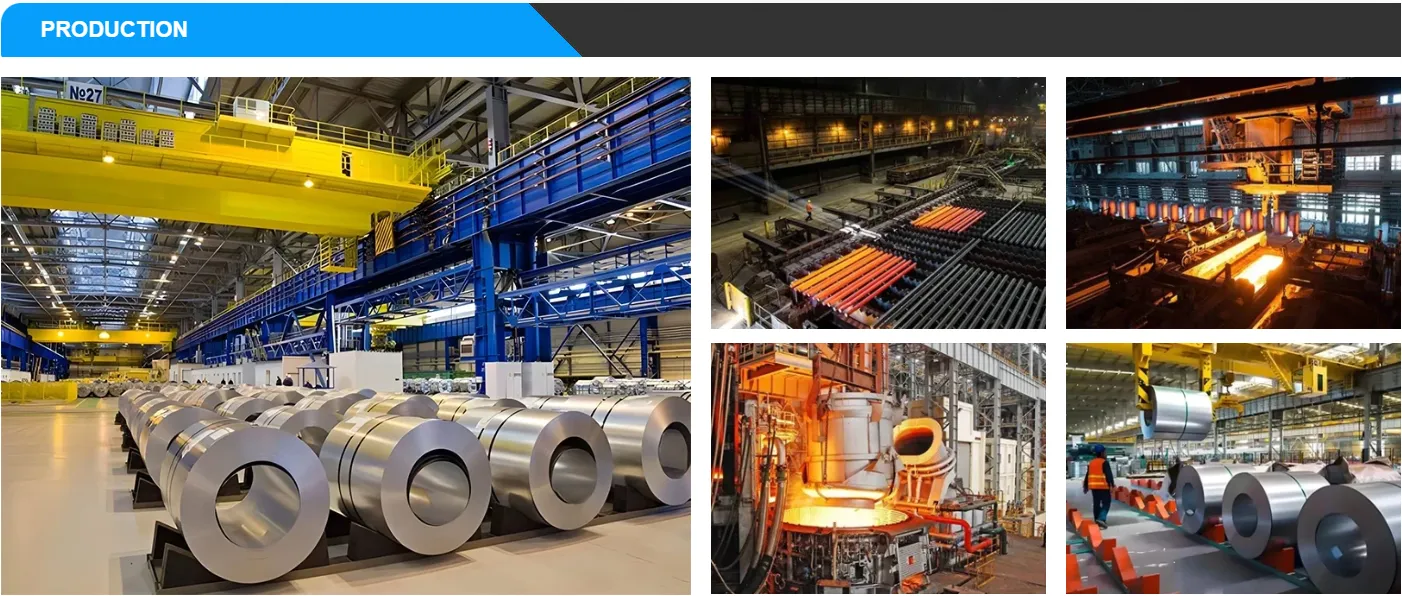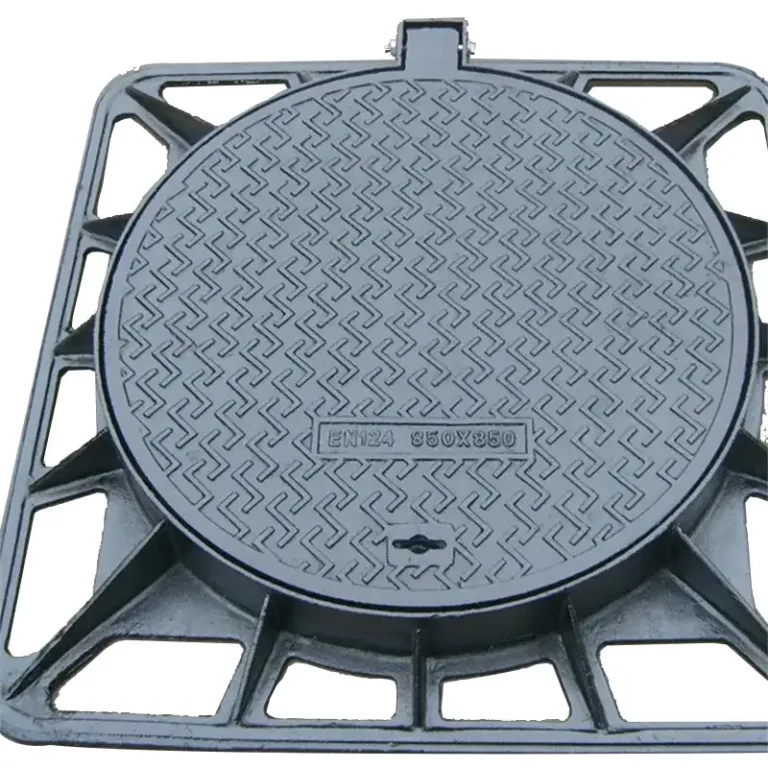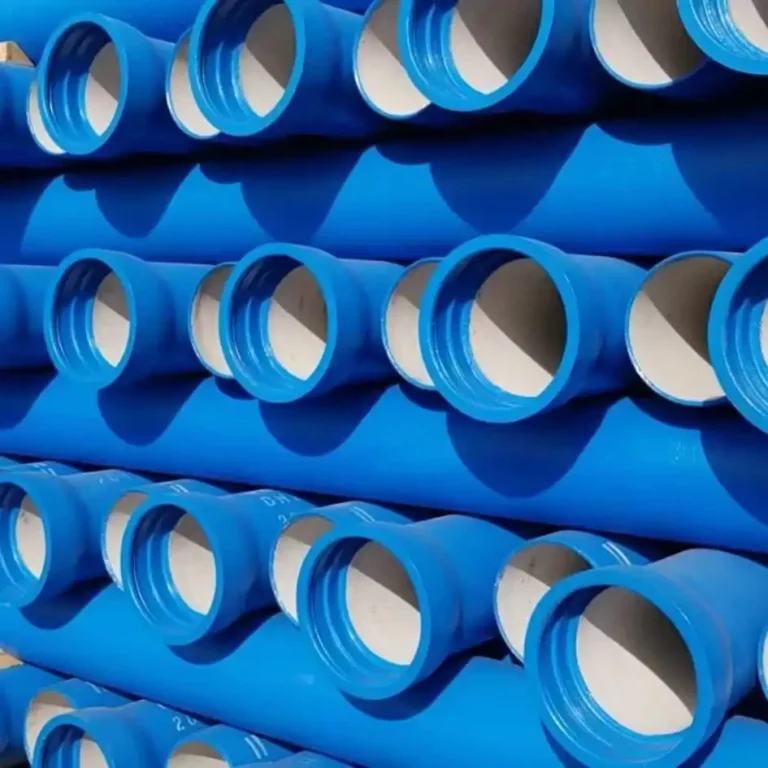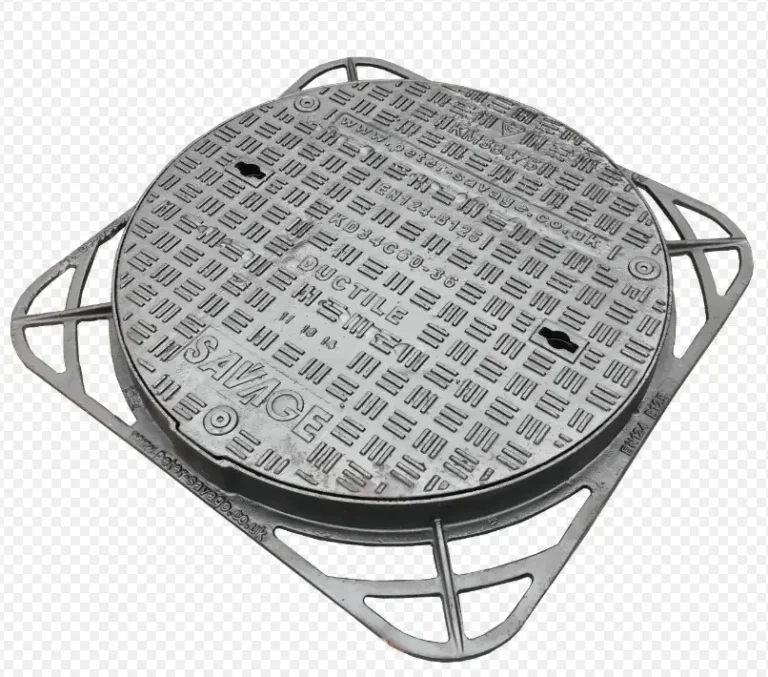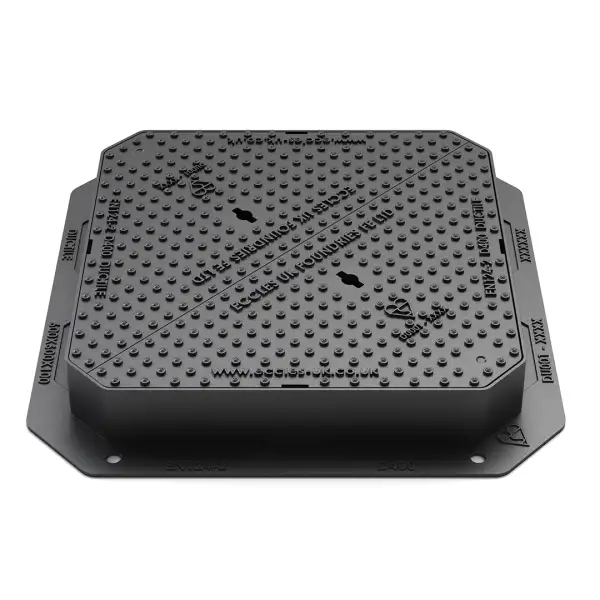Ductile iron drain grates combine exceptional strength, durability, and corrosion resistance, making them ideal for applications ranging from residential yards to airport runways. Their superior mechanical properties—thanks to a nodular graphite microstructure—allow them to withstand heavy vehicular loads (Class E/F) while maintaining flow performance and clog resistance. Modern manufacturing (ASTM A536-compliant casting and optional coatings) ensures consistent quality, and adherence to standards like EN 124, AASHTO M 306, and ASME A112-6-3 guarantees safety and interoperability.
1. Overview & Applications
Ductile iron drain grates serve as protective covers for trench drains, catch basins, and in-line pipe outlets, preventing debris ingress while allowing efficient water conveyance. They are ubiquitous in commercial plazas, industrial facilities, parking lots, roadways, and critical infrastructure such as airports and seaports. Their high load-rating (up to Class F per EN 124) makes them suitable for heavy traffic areas where cast iron or plastic grates would fail.
Beyond load capacity, ductile iron grates offer design flexibility—slot patterns, heel-proof surfaces, and ornamental cutouts—addressing ADA compliance, pedestrian safety, and architectural aesthetics. As urban stormwater demands grow, they help meet both hydraulic performance (open-area ratios up to 25 %) and local code requirements, reducing flood risk and maintenance costs.
2. Material Science & Properties
Ductile iron (nodular iron) differs from gray cast iron by its spheroidal graphite inclusions, which impart ductility, tensile strength (up to 80 ksi), and fracture toughness. The typical composition—iron with 3 %–4 % carbon, 1 %–3 % silicon, plus trace alloys—yields yield strengths of 50–65 ksi and elongations of 10 %–18 %. ASTM A536 grade 80-55-06 (80 ksi tensile, 55 ksi yield, 6 % elongation) is common for heavy-duty grates.
Corrosion resistance stems from the iron oxide patina that forms naturally; many manufacturers apply a black epoxy or asphaltic coating to protect during shipping and ease handling, without significantly increasing cost. Under traffic, the patina thickens, further slowing corrosion and often outlasting the surrounding pavement.
3. Design Variations & Patterns
Ductile iron grates are available in several patterns:
-
Slotted: Parallel slots for maximum structural depth and high flow; common in trench drains (Class E/F).
-
Heel-Proof/ADA: Narrow transverse slots or I-bar profiles to prevent high-heel snagging; comply with ADA guidelines (max 0.5 in opening).
-
Decorative/Ornamental: Cast logos, geometric patterns, or drainage motifs for plazas and parks, combining function and aesthetics.
Each design balances open-area (hydraulic capacity) and structural integrity. Typical open-area ratios range from 12 % (heel-proof) to 30 % (slotted).
4. Manufacturing & Quality Control
-
Casting: Molten ductile iron is poured into sand or permanent molds; inoculants (e.g., magnesium) promote graphite spheroid formation.
-
Heat Treatment: Annealing or normalizing controls microstructure, enhancing toughness.
-
Machining & Trimming: Critical dimensions (slots, frame seating surfaces) are machined to ± 0.02 in tolerance.
-
Coating: Epoxy, powder-coat, or hot-dip galvanizing (ASTM A123) options protect against handling damage.
-
Inspection & Testing: Mechanical tests (tensile, impact) per ASTM A536 and proof-load tests per AASHTO M 306 ensure compliance; load plates verify no permanent deformation at spec loads.
Manufacturers often operate ISO 9001-certified plants, with statistical process control to minimize casting defects and ensure repeatable performance.
5. Standards, Codes & Load Classes
Ductile iron grates must comply with regional and international standards:
| Standard / Code | Region | Material Spec | Load Classes |
|---|---|---|---|
| ASTM A536 | USA/Global | Ductile Iron grades | A–F (AASHTO M 306 proof-load) |
| EN 124 | Europe | EN 1563 Ductile Iron | A (1.5 t)–F (40 t) |
| AASHTO M 306 | USA | Ductile Iron per A536 | H-20 (Class C/E) |
| ASME A112-6-3 | USA | Protective coating req. | Light to heavy-duty |
Load-class definitions vary: EN 124 F demands proof loading of 400 kN (~ 40 t), while AASHTO H-20 (Class C/E) requires 320 kN (32 t). ASTM A536 ensures consistent mechanical performance across grades, with grade selection driven by application (e.g., Class F grates often use grade 80-55-06).
6. Installation Best Practices
Proper installation ensures optimal performance, safety, and longevity of ductile iron drain grates.
-
Site Preparation
Clear the trench or catch basin of debris and verify dimensions to match the grate/frame assembly. Ensure the substrate is level and compacted to prevent differential settlement under traffic loads. -
Frame Alignment
Position the cast-iron frame accurately within the concrete or polymer channel. Use shims or leveling screws as needed to achieve a flush, gap-free seating surface. -
Anchoring & Fasteners
Secure frames to channels using corrosion-resistant stainless steel or coated fasteners specified by the channel manufacturer (e.g., DS-123 screws). Tighten to manufacturer torque specifications to avoid overtightening and frame distortion. -
Grate Placement
Place the ductile iron grate into the frame, verify proper engagement of locking tabs or clips, and confirm that removal access is maintained for future maintenance. -
Concrete Backfill & Finishing
Pour concrete around the frame up to the flange edge, using non-shrink grout for high-traffic applications. Strike off flush with the grate surface to prevent trip hazards. Allow curing per standard ASTM C94 guidelines.
Correct installation minimizes water infiltration beneath the channel, prevents frame loosening, and ensures the grate remains level under dynamic loads.
7. Maintenance & Longevity
Regular inspection and maintenance preserve hydraulic capacity and structural integrity.
-
Routine Cleaning
Remove surface debris (leaves, sediment) monthly to prevent clogging. Use a stiff broom or low-pressure water spray; avoid high-pressure washers that can erode adjacent pavement. -
Corrosion Inspection
Every six months, inspect coating condition. Light surface rust is acceptable as the iron oxide patina protects the metal; deep pitting requires wire-brushing and touch-up with cold-galvanizing spray. -
Fastener Check
Verify that all screws or clips remain secure. Replace missing or corroded fasteners with equivalent ASTM-A193 grade stainless steel hardware. -
Structural Assessment
Annually conduct a visual check for cracks or deformation. Load-class-rated proof-load testing (per AASHTO M 306) is recommended every 5–10 years for critical infrastructure. -
Re-coating & Replacement
If wear exceeds 20 % of original thickness or open-area ratio drops below design by >10 %, consider full grate replacement to maintain hydraulic performance.
With proper upkeep, ductile iron grates can exceed 50 years of service life, often outliving surrounding concrete channels and pavement.
8. Environmental & Sustainability Considerations
Ductile iron grates offer notable sustainability benefits over their lifecycle.
-
High Recyclability
Ductile iron is almost 100 % recyclable; scrap iron from end-of-life grates is commonly re-melten into new castings, reducing raw‐material demand. -
Low Lifecycle Emissions
Comparative life‐cycle assessments show ductile iron drain components emit up to 30 % less CO₂ over 100 years than plastic alternatives, owing to long service life and lower maintenance demands. -
Energy‐Efficient Production
Modern foundries employ energy‐recovery systems and optimized melting processes, lowering per-unit energy consumption by 15 % compared to a decade ago. -
Durability & Waste Reduction
Exceptional wear resistance leads to fewer replacements, minimizing landfill contributions. A standard ASTM A536 Grade 80-55-06 grate can service over 75 years in low‐corrosive environments. -
Sustainable Coatings
Epoxy and powder coatings now feature low‐VOC formulations, aligning with LEED and other green‐building standards.
These factors position ductile iron grates as a top choice in sustainable infrastructure projects.
9. Cost Analysis & Lifecycle Value
While upfront costs are higher than plastic or steel, the total cost of ownership (TCO) favors ductile iron over the long run.
| Cost Component | Plastic Grates | Steel Grates | Ductile Iron Grates |
|---|---|---|---|
| Initial Unit Price (ea.) | $50–$80 | $60–$100 | $120–$200 |
| Installation Labor (hr) | 0.5 h | 0.5 h | 0.7 h |
| Maintenance (10 yr) | $200 | $350 | $150 |
| Replacement Cycle | 10 years | 20 years | 50 years |
| 50-Year TCO (per unit) | $1,250 | $1,100 | $600 |
Data synthesized from manufacturer catalogs and DIPRA lifecycle studies.
-
Initial Investment
Ductile iron commands a premium of ~2× plastic, justified by its superior load capacity (Class E/F) and lifespan. -
Maintenance Savings
Lower cleaning and replacement frequency yield a 60 % reduction in maintenance costs over 50 years. -
Long-Term Value
Even with higher labor input at installation, TCO for ductile iron is roughly 50 % that of plastic grates over 50 years.
10. Emerging Trends & Innovations
The ductile iron grate industry is evolving to meet modern infrastructure needs:
-
Smart Grates
Integration of IoT sensors for real-time flow monitoring, clog detection, and predictive maintenance. Pilot programs in Europe report 20 % fewer overflow events. -
Advanced Coatings
Development of self-healing polymer coatings that repair micro-scratches, extending service intervals by up to 30 %. -
Lightweight Composites
Hybrid frames combining ductile iron grate surfaces with reinforced polymer substrates reduce weight by 15 % while retaining Class D load ratings, aiding manual handling. -
Additive Manufacturing
Early R&D into 3D-printed molds and conformal internal cooling channels promises tighter tolerances and reduced defects. -
Circular Economy Models
Manufacturers partnering with municipalities to reclaim old grates, refurbish or recycle them, and offer buy-back programs to close the materials loop.
These innovations will drive further efficiency, sustainability, and cost savings in the years ahead.
Frequently Asked Questions (FAQ)
1. What load class of ductile iron drain grate do I need for a residential driveway?
For residential driveways, where only light passenger vehicles (up to 3.5 t axle load) are expected, an EN 124 load class B (up to 12.5 t proof load) or AASHTO H-10 (Class B/C) grate is typically sufficient. Class B grates have a proof-load requirement of 125 kN (~12.5 t) and are designed for sidewalks, pedestrian areas, and residential traffic. These grates feature adequate structural thickness and slot patterns that balance hydraulic capacity (open-area ratio ~15 %) with safety (heel-proof slot widths ≤0.5 in). Installation cost is moderate, and maintenance intervals are long (20–30 years), offering homeowners a cost-effective solution while maintaining driveway aesthetics.
2. How do ductile iron grates compare to polymer composite grates in corrosive environments?
Polymer composite grates resist corrosion better than bare metal, but their mechanical strength and stiffness are lower—often limited to light or medium load classes (A–C). In highly corrosive or chemical-exposed environments (e.g., industrial wash-down areas, seawater‐sprayed docklands), polymer composites avoid rusting, yet may suffer UV degradation over time unless UV stabilizers are added. Ductile iron grates with proper epoxy or hot-dip galvanized coatings achieve a blend of superior load capacity (up to Class F/HS-25) and corrosion protection, with expected service life exceeding 50 years. Life-cycle assessments indicate that even with periodic recoating, ductile iron often outperforms composites in both total cost and sustainability metrics.
3. What are the key steps to prevent grate settlement and roadway deterioration?
Grate settlement and surrounding pavement distress often stem from poor subgrade compaction and improper backfill techniques. To prevent settlement:
-
Compact subgrade to at least 95 % Proctor density before placing the frame.
-
Use non-shrink, high-strength grout around the frame flange to lock it in place and distribute loads evenly into the concrete surround.
-
Embed a minimum of 2 in of concrete cover over the channel’s sidewalls to avoid edge voids and spalling under traffic.
-
Ensure proper drainage slope (1–2 %) toward the grate so water does not pond and erode the subbase.
-
Inspect annually for signs of grout cracking or frame movement, and repair early using epoxy injection or re-grouting techniques.
By following these best practices, engineers can minimize maintenance costs, extend service life, and uphold safety standards.
4. Can ductile iron grates be used in coastal environments with salt spray?
Yes—ductile iron grates are well suited for coastal applications when properly protected. The iron forms a stable oxide patina that provides some corrosion resistance, but in marine atmospheres, additional measures are recommended:
-
Hot-dip galvanizing (ASTM A123) provides a zinc barrier that sacrifices itself to protect the iron beneath.
-
Epoxy-polyester powder coatings with thicknesses ≥100 µm prevent chloride ingress and UV damage.
-
Regular rinsing of salt deposits and annual touch-up with cold-galvanizing spray further prolongs life.
Studies of harbor installations show galvanized ductile iron grates maintain structural integrity beyond 25 years with minimal section loss (<5 %). Coastal engineers often specify stainless-steel fasteners and sacrificial anodes in severe exposure zones for added protection.
5. How is the open-area ratio of a grate calculated, and why does it matter?
The open-area ratio (OAR) is the percentage of unobstructed surface area available for water flow. It is calculated by dividing the total area of slots/holes by the gross grate area and multiplying by 100 %.
-
High OAR (25–30 %) maximizes hydraulic capacity, reducing surface flooding risk during storm events.
-
Low OAR (10–15 %) improves structural stiffness and pedestrian safety (heel-proof design).
Balancing OAR is critical: a grate with 30 % OAR but thin cross-bars may deform under load, while a heavily ribbed grate with 12 % OAR could cause upstream ponding. Hydraulic modeling tools (e.g., EPA SWMM) can predict flow rates based on OAR, slot geometry, and inlet head, helping designers select the optimal pattern for site-specific conditions.
6. What innovations are driving the next generation of ductile iron drain grates?
The leading innovations include smart-sensor integration, advanced coatings, and materials optimization:
-
IoT-enabled monitoring modules embedded within covers transmit real-time flow, water quality, and clog alerts via LoRaWAN or NB-IoT, reducing emergency response times by up to 30 % in pilot programs.
-
Self-healing polymer-fused epoxy coatings leverage micro-capsule technology to seal micro-cracks automatically, cutting recoating frequency by 40 %.
-
Lightweight hybrid frames combine a ductile iron load surface with fiber-reinforced polymer bases, slashing overall weight by up to 20 % for easier handling while retaining Class D load ratings.
-
Additive manufacturing of sand molds yields more intricate, flow-optimized slot geometries and shorter lead times.
-
Circular supply chains with grate-buyback and refurbishment services are emerging, enabling municipalities to recover value from end-of-life assets and drive toward zero-waste infrastructure cycles.
